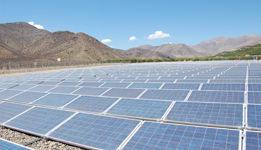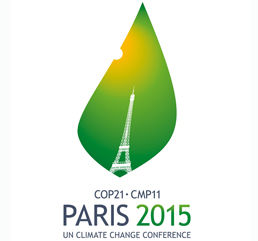Transforming the Energy Sector and Implementing NDCs
- Leila Yim Surratt
- Jan 13, 2016
- 3 min read

With the historic Paris climate agreement now in place, including mitigation commitments, now called Nationally Determined Contributions or (NDCs), from 195 countries, governments are now charged with converting their targets into actionable policies and programs on the ground. CCAP’s recently-released a paper, Converting Nationally Determined Contributions into Action, takes a deep look at INDCs from key developing countries to explore how they can advance these pledges to long-term transformative actions after COP21. Given that the energy sector is one of the primary sources of global greenhouse gas emissions, transforming the energy sector to cleaner, renewable sources will be a key part of achieving the Paris commitments.
Fortunately, tremendous advancements toward low-carbon energy are already occurring in the power sector, including innovations in technology, policy and finance. The global price of solar has fallen 80% in five years, and the cost of wind power has been reduced by more than half.[1] Distributed generation, including small-scale onsite power such as rooftop solar, is turning consumers into energy producers and reducing the need for large investments in utility-scale generation. In many markets, new businesses are entering the power industry, shifting a historically monopolistic sector into a more competitive one—reducing costs and improving efficiency.

CCAP’s side event at COP21, Transformation in the Energy Sector and Achieving INDCs, highlighted these developments, and examined how several leading countries including Uruguay and Germany are pursuing this transformation. Representatives from developed and developing countries, as well as executives from the private sector shared their experiences and success in promoting clean energy to meet climate change and sustainable development objectives.
Uruguay sets a strong example that rapid transformation is possible. In less than 10 years, and without government subsidies or increasing consumer costs, the country has significantly diversified its energy mix, adding more renewables, while lowering electricity costs and dependence on foreign oil. As a result of policy measures, including tenders for renewable energy, net energy metering and incentivizing investment in non-hydro renewable energy, renewable energy now represent 55% of the primary energy supply matrix. Ninety five percent of electricity is generated by renewables, primarily from hydroelectric (49% of generation in 2015), wind (27%) and biomass (19%). Uruguay was also the first country in Latin America to enable grid-connected renewable micro generation through net metering.
Achieving energy transformation requires a strong, forward thinking policy framework–one that helps attract private sector investment. Germany has achieved this through renewable portfolio standards, a quota-based system for increasing the production of energy from renewable sources, and feed-in tariffs, which make renewables more competitive in the market. From 2000 to 2014, Germany expanded the number of renewable energy generation sources from 30,000 to 1,500,000. Beyond mitigating carbon emissions, the growing RE sector saves Germany approximately 10 billion Euros in fossil fuel imports each year and has led to significant increases in job creation.
In the U.S., California is rapidly transforming its energy sector. At CCAP’s Energy Transformation Dialogue, in California in August 2015, which brought together key energy and utility regulators from Asia and Latin America to share best practices, California shared that they have more than doubled renewable energy capacity over the past four years. The state reached 25% renewables capacity (not including large hydro) in 2015 and plans to meet their 33% renewable energy target in 2020, and has recently set a 50% target for 2030. California’s bold Renewable Portfolio Standard and clean energy policies have also been good for their economy, attracting $75 billion in RE investment and thousands of additional jobs. According to the Department of Energy, 1 out of 78 new jobs created in the U.S. are in the solar industry. SolarCity, a California solar company founded just nine years ago, already has more employees than the five largest California utilities combined and is bringing solar panel manufacturing back to the country.
As the cost of renewable technologies continues to fall, there is an opportunity for developing countries to reduce fossil fuel-dependency and meet fast-growing energy demand with clean power, creating local jobs and economic growth that is decoupled from energy demand. The focus on energy transformation will only increase going forward. Announced at COP21, through the Mission Innovation initiative, 20 countries are committing to double their investments in R&D for clean energy. And with the Paris Agreement now requiring countries to develop progressively more ambitious emission reduction targets every five years, the opportunities and momentum for pursuing clean energy will only grow.
Going forward, CCAP will help build on the strong momentum from Paris to help countries put in place the policies, programs and financing strategies needed to effectively achieve this paradigm shift in the energy sector.


Comments